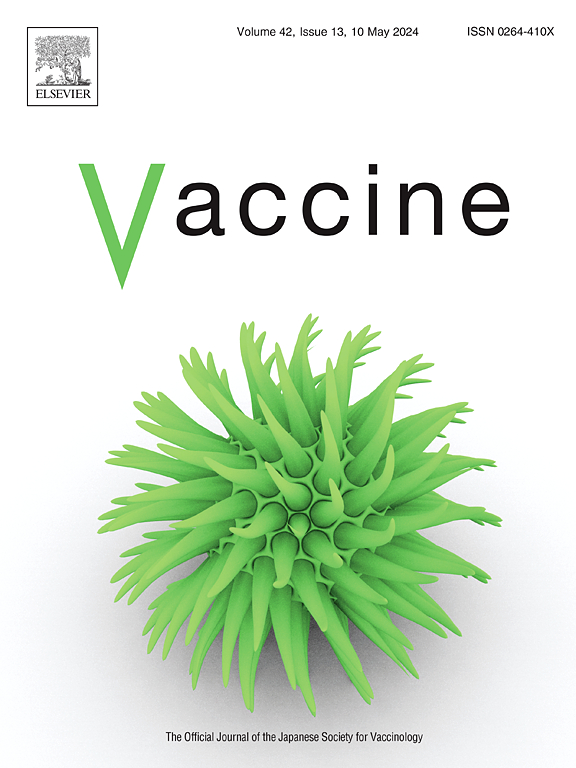TCR bias drives development of dominant vaccine-induced CD8+ T cell responses which can be redirected toward cellular targets
IF 4.5
3区 医学
Q2 IMMUNOLOGY
引用次数: 0
Abstract
The yellow fever (YF) vaccine is known to elicit strong CD8+ T cell immune responses, predominantly targeting an HLA-A2-restricted immunodominant epitope within the NS4B protein. We aimed to characterize these cells and explore their functional utility when redirected to a target unrelated to YF. We performed single-cell TCR and mRNA sequencing on YF-specific CD8+ T cells from five vaccinated donors, 21 days post-vaccination to characterize their clonal diversity and transcriptional profiles. An HLA-restricted bispecific T cell engager, Redirector of Vaccine-induced Effector Responses (RoVER), was used to redirect YF-specific CD8+ T cells toward target cells including HIV-1-infected CD4+ T cells and CD19+ B cells. The vaccine elicited a robust CD8+ T cell response characterized by a diverse set of differentiated YF-specific cells spanning activated naïve-like, memory and effector phenotypes. Despite biases in the TCR repertoires, antigen-specificity did not promote the development of unique phenotypes following vaccination. Our findings suggest phenotypic overlap causing redundancy in CD8+ T cell immunity across YF epitopes. Using the recombinant RoVER, YF-specific CD8+ T cells could be redirected toward other target cells, leading to efficient target cell elimination. Together, this study enhances our understanding of the cytotoxic T cell response to viral infections and its implications for vaccine development, while also supporting the development of personalised immunotherapies tailored to individual HLA alleles.
TCR偏倚驱动显性疫苗诱导的CD8+ T细胞反应的发展,这种反应可以重定向到细胞靶点。
已知黄热病(YF)疫苗可引起强烈的CD8+ T细胞免疫应答,主要针对NS4B蛋白内的hla - a2限制性免疫优势表位。我们的目的是表征这些细胞,并探索它们在重定向到与YF无关的靶标时的功能效用。在接种疫苗21天后,我们对5名接种疫苗的供者的yf特异性CD8+ T细胞进行了单细胞TCR和mRNA测序,以表征其克隆多样性和转录谱。一种hla限制性双特异性T细胞参与器,疫苗诱导效应反应重定向器(RoVER),用于将yf特异性CD8+ T细胞定向到靶细胞,包括hiv -1感染的CD4+ T细胞和CD19+ B细胞。该疫苗引发了强大的CD8+ T细胞应答,其特征是多种分化的yf特异性细胞跨越激活naïve-like、记忆和效应表型。尽管在TCR谱中存在偏见,抗原特异性并没有促进疫苗接种后独特表型的发展。我们的研究结果表明,表型重叠导致CD8+ T细胞免疫在YF表位上的冗余。利用重组的RoVER, yf特异性CD8+ T细胞可以被重定向到其他靶细胞,从而有效地消除靶细胞。总之,这项研究增强了我们对细胞毒性T细胞对病毒感染的反应及其对疫苗开发的影响的理解,同时也支持针对单个HLA等位基因定制的个性化免疫疗法的开发。
本文章由计算机程序翻译,如有差异,请以英文原文为准。
求助全文
约1分钟内获得全文
求助全文
来源期刊

Vaccine
医学-免疫学
CiteScore
8.70
自引率
5.50%
发文量
992
审稿时长
131 days
期刊介绍:
Vaccine is unique in publishing the highest quality science across all disciplines relevant to the field of vaccinology - all original article submissions across basic and clinical research, vaccine manufacturing, history, public policy, behavioral science and ethics, social sciences, safety, and many other related areas are welcomed. The submission categories as given in the Guide for Authors indicate where we receive the most papers. Papers outside these major areas are also welcome and authors are encouraged to contact us with specific questions.
 求助内容:
求助内容: 应助结果提醒方式:
应助结果提醒方式:


